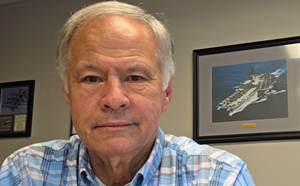Basement Waterproofing Expert Charlie Hill of Kalamazoo Explains Foundation Repair Myths for HelloNation
KALAMAZOO, Mich., Oct. 29, 2025 (GLOBE NEWSWIRE) -- What are the most common foundation repair myths that homeowners believe, and how can understanding the facts prevent long-term damage? A HelloNation article featuring Charlie Hill of Great Lakes Waterproofing in Kalamazoo, Michigan, breaks down the misconceptions surrounding foundation issues and the truth behind structural stability.
The article highlights how foundation damage is not exclusive to aging homes, addressing one of the most persistent foundation repair myths. Charlie Hill explains that residential foundation movement can occur in structures of any age due to soil conditions and foundation damage caused by water saturation or improper grading. Even new homes built on expansive clay or unprepared fill may experience shifting and cracking, proving that foundation stress is not limited to older buildings.
Many homeowners also assume that small cracks or cosmetic fixes mean a problem is minor. The article points out that cosmetic vs. structural repairs often get confused, with patching or tuckpointing offering only a temporary disguise. These methods may hide symptoms but fail to address the root cause of movement. Hill emphasizes that when foundation settlement begins, homeowners should seek professional evaluation instead of relying on surface solutions.
The HelloNation feature further explains that soil movement beneath a home exerts unpredictable and powerful forces. When water saturation near the foundation increases, it leads to lateral pressure, expansion, and contraction cycles. These conditions worsen over time if left unaddressed. Proper grading, redirection of runoff, and drainage correction form the foundation of a sustainable response to structural issues. Ignoring these factors often transforms manageable problems into severe structural concerns.
Another misconception addressed in the article is the idea that homeowners can handle foundation stabilization independently. DIY approaches may seem appealing, but they can result in costly mistakes. Foundation stabilization techniques such as helical pier installation or subsurface drainage correction require expertise and precision. A professional foundation assessment identifies whether the issue arises from hydraulic pressure, soil expansion, or inadequate drainage, guiding the selection of the right stabilization method.
According to the HelloNation feature, professional foundation assessment plays a key role in preventing further damage. Contractors trained in structural analysis evaluate not just the cracks, but the entire system of forces affecting the home’s foundation. The assessment informs whether reinforcement, piering, or drainage adjustments are required. Hill underscores that this process goes beyond patching visible cracks, focusing instead on restoring stability to the foundation and ensuring long-term protection.
The article also discusses how soil conditions and foundation damage are closely linked. As soil shifts due to moisture and temperature changes, it can exert stress on the building’s footing and load-bearing walls. Over time, this repeated pressure can cause misaligned doors, warped frames, and uneven floors. Hill notes that such signs of foundation failure often appear gradually, making early detection and intervention vital.
A recurring theme in the article is that delaying foundation repairs can worsen both cost and impact. Foundation settlement solutions work best when applied before cracks widen or slabs separate. Hill explains that early intervention minimizes damage, stabilizes the structure, and prevents additional strain on connected systems such as plumbing or flooring. Foundation repair myths often lead homeowners to postpone necessary action, which can make eventual restoration more complex.
The HelloNation article also examines how improper grading issues and poor drainage setups contribute to long-term damage. When water consistently pools near the base of a home, it can compromise the soil’s stability, leading to uneven pressure beneath the foundation. Correcting slope and ensuring proper downspout extension are simple yet powerful ways to prevent recurring water saturation near the foundation. These preventive steps, paired with professional inspection, can make a measurable difference in maintaining a home’s structural integrity.
Hill’s perspective in the HelloNation feature encourages homeowners to focus on both the visible and hidden factors behind structural wear. He stresses that foundation stabilization techniques should never be isolated efforts. Effective foundation settlement solutions must consider soil behavior, water management, and load distribution together. This integrated approach ensures that the foundation remains stable over time rather than merely appearing repaired.
The discussion also clarifies that residential foundation movement does not have a single cause. It results from the interaction of natural and structural forces, from fluctuating groundwater levels to the design of the foundation system itself. Understanding how these variables connect helps professionals recommend appropriate reinforcement and repair methods. Hill explains that each property’s unique soil composition and drainage pattern should shape its foundation maintenance plan.
In the final section, the article advises that foundation damage is rarely just an above-ground issue. Structural distress often begins beneath the surface, where continuous geological stress weakens the footing. Ignoring early signs such as small cracks, water intrusion, or minor wall bowing may allow damage to progress unnoticed. Hill’s insights remind readers that foundation health depends on addressing both visible and unseen threats through comprehensive evaluation and correction.
Myth vs. Fact: Foundation Repair Edition features insights from Charlie Hill, Basement Waterproofing Expert of Kalamazoo, Michigan, in HelloNation.
About HelloNation
HelloNation is a premier media platform that connects readers with trusted professionals and businesses across various industries. Through its innovative “edvertising” approach that blends educational content and storytelling, HelloNation delivers expert-driven articles that inform, inspire, and empower. Covering topics from home improvement and health to business strategy and lifestyle, HelloNation highlights leaders making a meaningful impact in their communities.
Patrick McCabe
info@hellonation.com
www.hellonation.com

A photo accompanying this announcement is available at https://www.globenewswire.com/NewsRoom/AttachmentNg/b4e5ec14-3f77-48b7-90da-cf37fafd0ff2

Legal Disclaimer:
EIN Presswire provides this news content "as is" without warranty of any kind. We do not accept any responsibility or liability for the accuracy, content, images, videos, licenses, completeness, legality, or reliability of the information contained in this article. If you have any complaints or copyright issues related to this article, kindly contact the author above.

